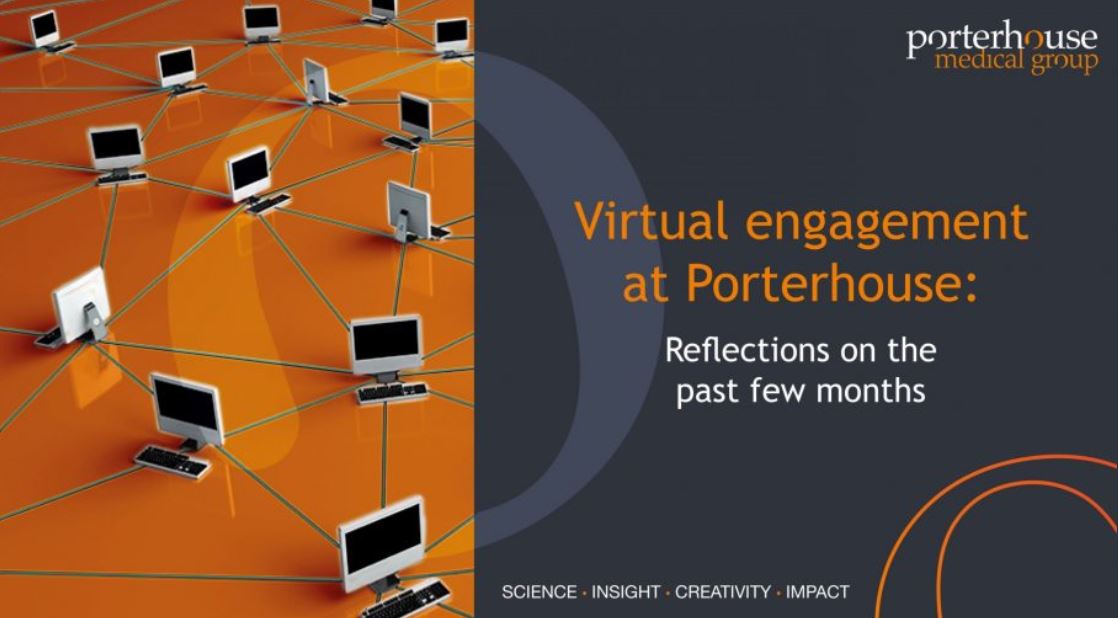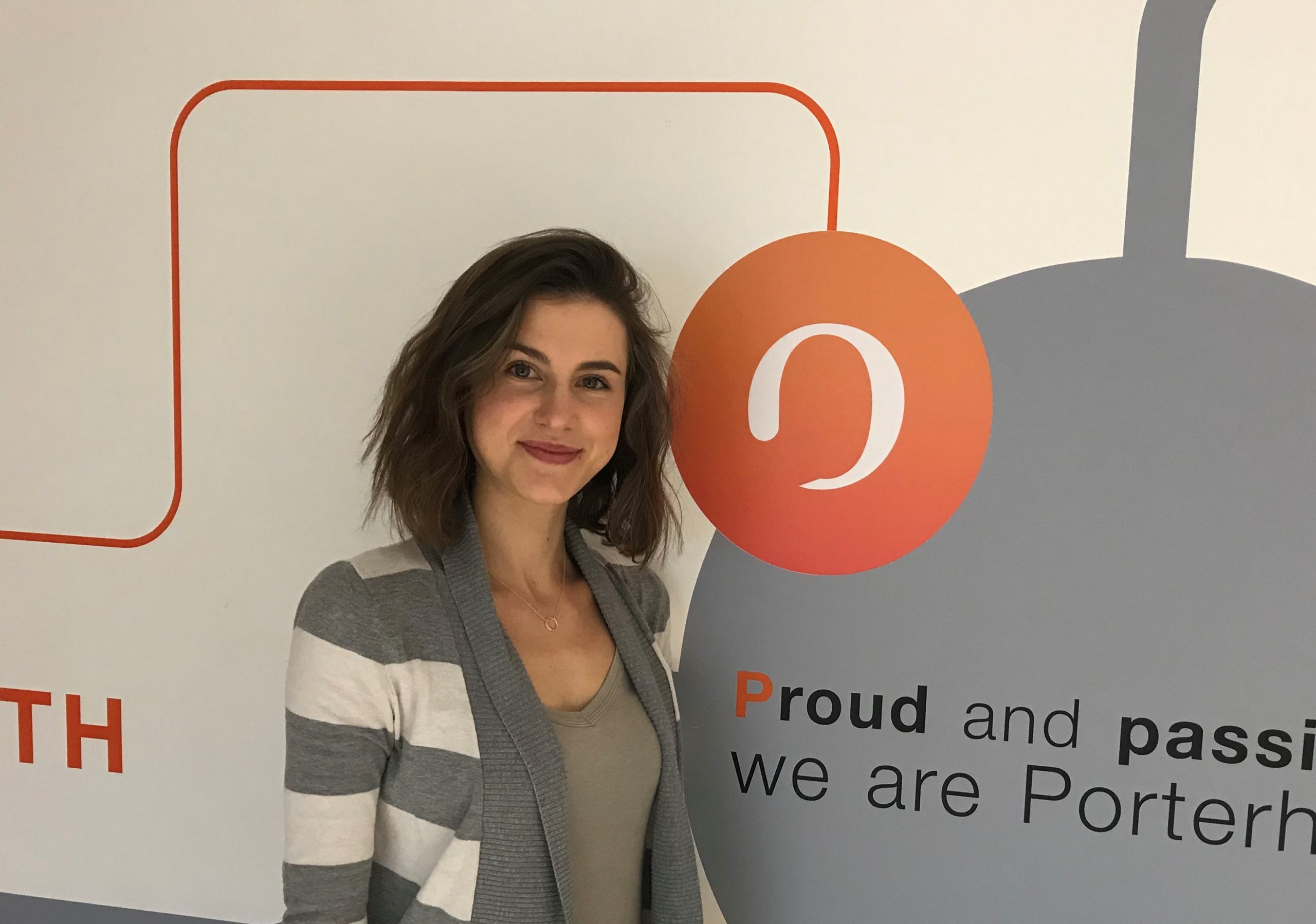Virtual Engagement At Porterhouse: Reflections on the past few months
August 5, 2020 | Digital Communications, Porterhouse Medical Group, Virtual Engagement, Virtual meetings and events
A look at how the pitfalls of virtual engagement can be avoided and the key advantages of virtual client and KOL engagement strategies in a now predominantly digital world.

Owing to the global COVID-19 pandemic, most of our day-to-day communications now occur in an almost exclusively virtual world, which has demanded changes to the way we conduct our professional and personal interactions. Client and key opinion leader (KOL) engagement is no exception to this new way of working, with a significant increase in the use of platforms such as Zoom and Microsoft Teams changing the way we interact with each other. With so many of us now working from home, the past 4 months have highlighted some – perhaps unexpected – advantages to the increase in virtual engagement, while also emphasising some issues. In this article, we will discuss the changes we have experienced to our way of working at Porterhouse, consider how the pitfalls of virtual engagement can be avoided, and illustrate what we have found to be the key advantages of virtual client and KOL engagement strategies in a now predominantly digital world.
“Meeting the ‘face behind the phone’ has helped us to relate to clients and KOLs as individuals outside of their professional lives”
Perhaps the most important benefit to virtual communication, and one that may not have been recognised previously, is an actual increase in face-to-face meetings, albeit over video. When working in an office environment, it is common to default to telephone calls, which, although useful, are not so effective for getting to know the client or KOL on a personal level. The benefit of such a seemingly small change of seeing client’s and KOL’s faces was not necessarily recognised in the office environment. We have found that meeting the ‘face behind the phone’ has helped us to relate to clients and KOLs as individuals outside of their professional lives, and the impact of this on building strong and rewarding working relationships should not be overlooked. Although physical face-to-face meetings may be the optimal way to build relationships, the practicalities of travel and synchronising diaries, etc. inevitably make such meetings difficult to schedule. There are undeniable benefits to using video conferencing software, and we should consider using it frequently in the future (even if we go back to working in an office environment).
Poor Internet connection, time lags and other IT issues have been the most frequent causes of frustration when working from home. Combined with the lack of physical cues, speakers talking over other speakers and awkward ‘who’s next?’ pauses, these issues can punctuate virtual meetings and disrupt the flow of conversation. Additionally, loss of Internet connection by a keynote speaker or a virtual meeting host can prevent a meeting from going ahead entirely, wasting participants’ time and potentially damaging a company’s reputation.
Having strong skills in managing the virtual environment in a clever and adaptive manner and ensuring that the preparatory work is carried out are both key factors in ensuring a successful virtual meeting. Furthermore, making sure that all participants have a clear idea of their role in the meeting and what is expected of them can help to offset the lack of in-person engagement; this is particularly important given the ability of participants to mute themselves and turn off their camera during a virtual meeting. In addition, including an alternative method of joining a meeting, such as a dial-in option, offers a solution to potential IT troubles (should they occur). Active participation tools in the form of live polls and Q&As can also be useful in encouraging the audience to engage with the speaker.
Although telephone calls are a common and useful method of interaction, a downside is the inability to explain a concept visually, which can lead to miscommunication. In contrast, communication via a virtual platform allows people to share documents with ease; displaying a diagram or a presentation at the click of a button is hugely beneficial and can also save time.
The way in which we interact with colleagues is also something that we have had to change while working from home. The inability to turn around for a quick brainstorm with your team or tap a colleague on the shoulder to ask a question has altered office dynamics. Using ‘quick conversation’ virtual platforms (such as Microsoft Teams) and maintaining regular contact with all team members has helped us to sustain team momentum and promote inclusion at Porterhouse.
There are inarguably benefits and challenges to virtual engagement. Although face-to-face communication remains vital and will continue to be a cornerstone of our working interactions, we have had to adapt to the virtual environment as a matter of necessity; this has instigated rapid acquisition of a skill set that can be used during the COVID-19 pandemic and beyond. In the future, a hybrid of in-person and virtual communication likely offers the most effective and convenient method of engagement.

Author: India Hemming, Account Executive, Porterhouse Medical
As scientific and medical communications experts, Porterhouse Medical Group delivers scores of successful virtual and face-to-face meetings and events for our global pharmaceutical clients every year. Our approach combines strategic thinking with the latest technology and expertise to transform medical training, meetings and events in innovative ways.
We would love to help!
This content was provided by Porterhouse Medical Group




